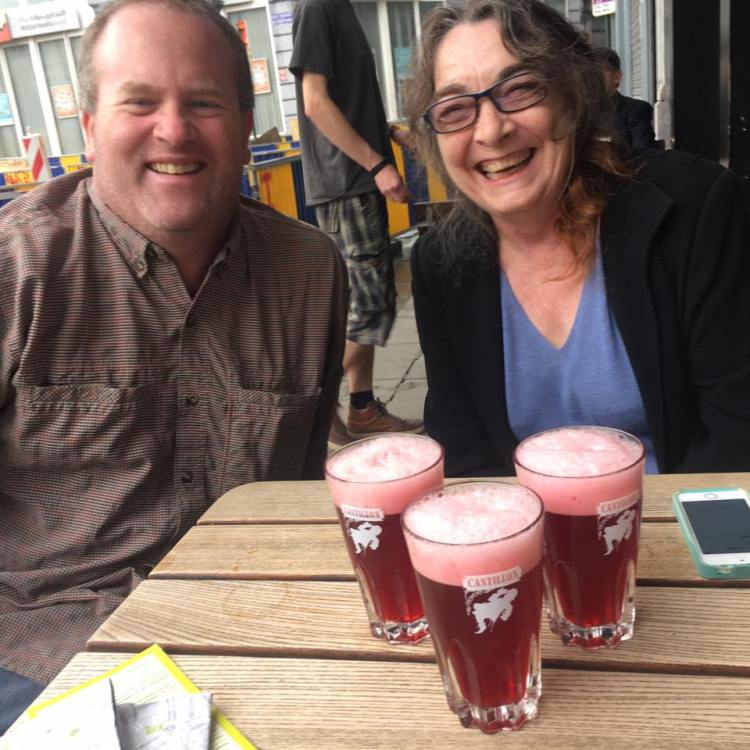As part of our “Field Trip” series, New Orleans burlesque producer and performer Trixie Minx continues her travelogue at Switzerland’s Jazz Ascona, which features a celebration of New Orleans music that includes the Treme Brass Band, Tom McDermott, Aurora Nealand, Glen David Andrews, Shamarr Allen, Topsy Chapman, Anais St. John, Lillian Boutté and Shannon Powell. Here she checks in at the midway point.
The other day I realized I had been in Switzerland for exactly one week, marking the mid-point of the Jazz Ascona Festival. It was a strange realization, because ever since I got to the festival time hasn’t been used as a unit of measurement so much as a pleasant reminder to see or work with another musician. It is difficult to describe but so clear to everyone that is here that Jazz Ascona is not merely a music festival but a music experience.
My days and nights have blurred together into a single thread of artistic and very human consciousness. When I first arrived I had a very grand plan of waking up early, working on projects with my friends, seeing the sights and then performing all night. I love the calm of a scheduled routine, but the environment of the festival led me to relax my “plan” and truly live the experience I am so lucky to be in. So my typical yet not scheduled day starts by waking up early to the sound of church bells (which are on every corner; seriously, it’s like Starbucks) since they hate the idea of me sleeping in. In a zombie-like state, I leave my room in search of coffee. This is where my adventures begin… .
I’m half a block from the piazza, which is the main street on the lake and the location of most of the stages for the festival. I’ve taken dozens of pictures of the piazza, but photos don’t seem to capture the unimaginable beauty of this view. The street is lined with little cafes dotted with brightly colored, umbrella-covered tables looking out on to a lake swirled with crystal clear blue and green water. Swans gently glide by, and in the distance the snow-tipped Alps are as far as the eye can see. I joke that it is like “The Truman Show” because it truly looks to heavenly to be real.
On this beautiful street, I run into different musicians each day. They are either drinking coffee at a cafe, smoking under the shade of a tree, playing music on their balcony or even stumbling home from the night before. I’m very fortunate to have worked with most of these artists for years in New Orleans, but we very rarely get to hang outside of a gig; however in Ascona we have this unique bubble where we can both work and hang. Of course we go see shows, castles, waterfalls and mountains, but my favorite part continues to be the conversations we have with one another.
My evening starts around 8 p.m. parading with the Treme Brass Band. As the only burlesque lady dancing through the streets in sparkly drawers amongst a festival that is primarily made up of musicians and people who love jazz, I bring a little extra NOLA magic to the mix in my role as an ambassador. The crowds truly love music and New Orleans, so marching down the cobblestone streets each night with Treme is more than just a “gig” but truly an honor to be sharing what we do locally on an international level. Afterwards the guys and I get drinks, eat dinner and see more music. After all the stage shows, everyone meets up at the late-night jam session.
These jam sessions are perhaps one of the strongest defining points of Jazz Ascona. While each artist is amazing at their craft and kills it on their individual stage sets, at the jam session you have an incredible mix of all the artists playing together. It’s a very interesting game of musical chairs where people are continuously jumping on/off the stage to play the next song. I even got to get in the mix on bass for a couple tunes and did a pop-up burlesque performance as well.
With music in the air, booze in most everyone and an electric energy of happiness, the night fades into morning, and the process is all repeated again.
As I said earlier, time has not been a unit of measurement but a pleasant reminder of music each day. So while I am halfway through my “time” at Jazz Ascona, I’m not counting the minutes but loving all the moments, a concept I hope to bring back with me.







 As part of our “
As part of our “
 “Open 24/7 except when we are in Belgium”
“Open 24/7 except when we are in Belgium”